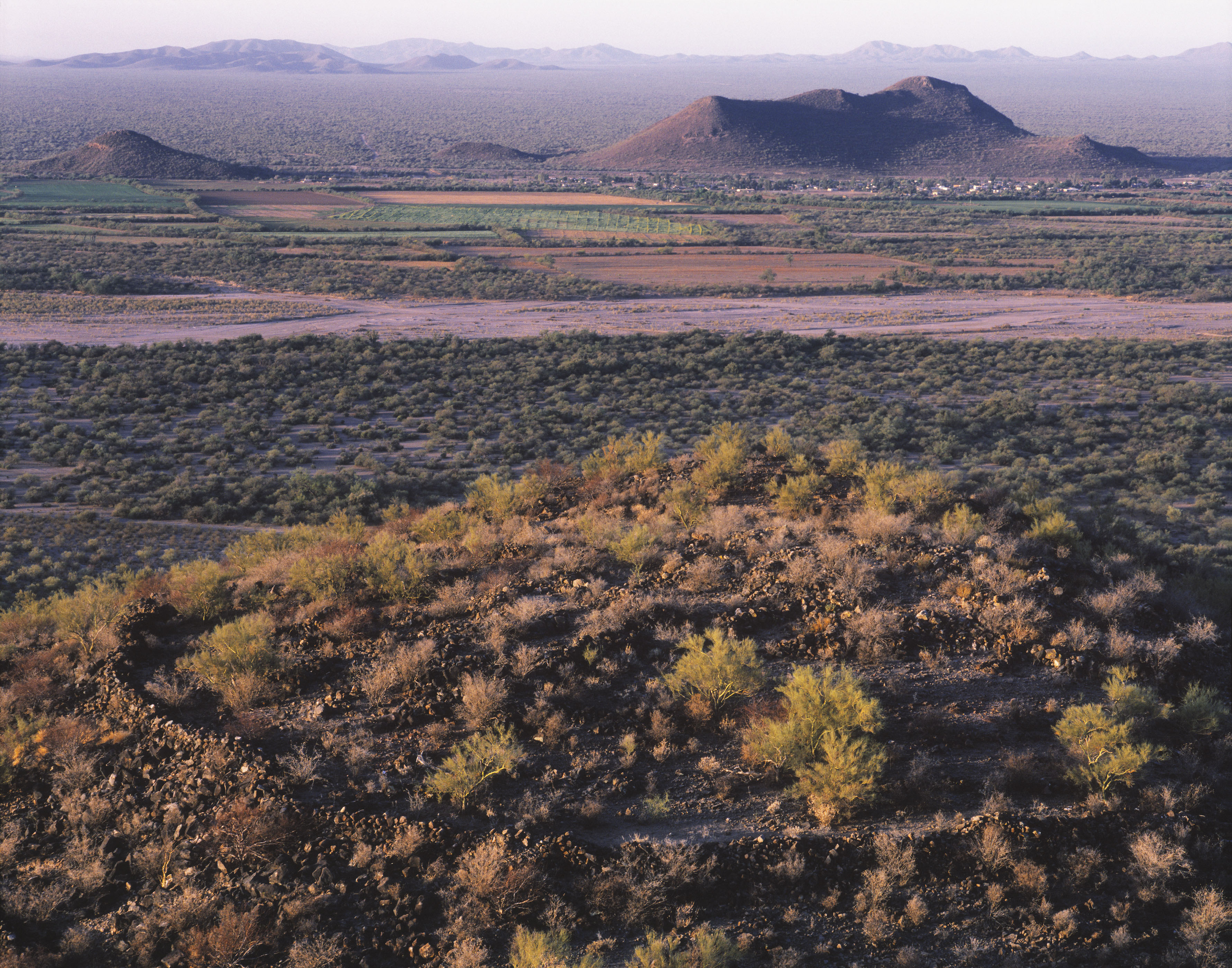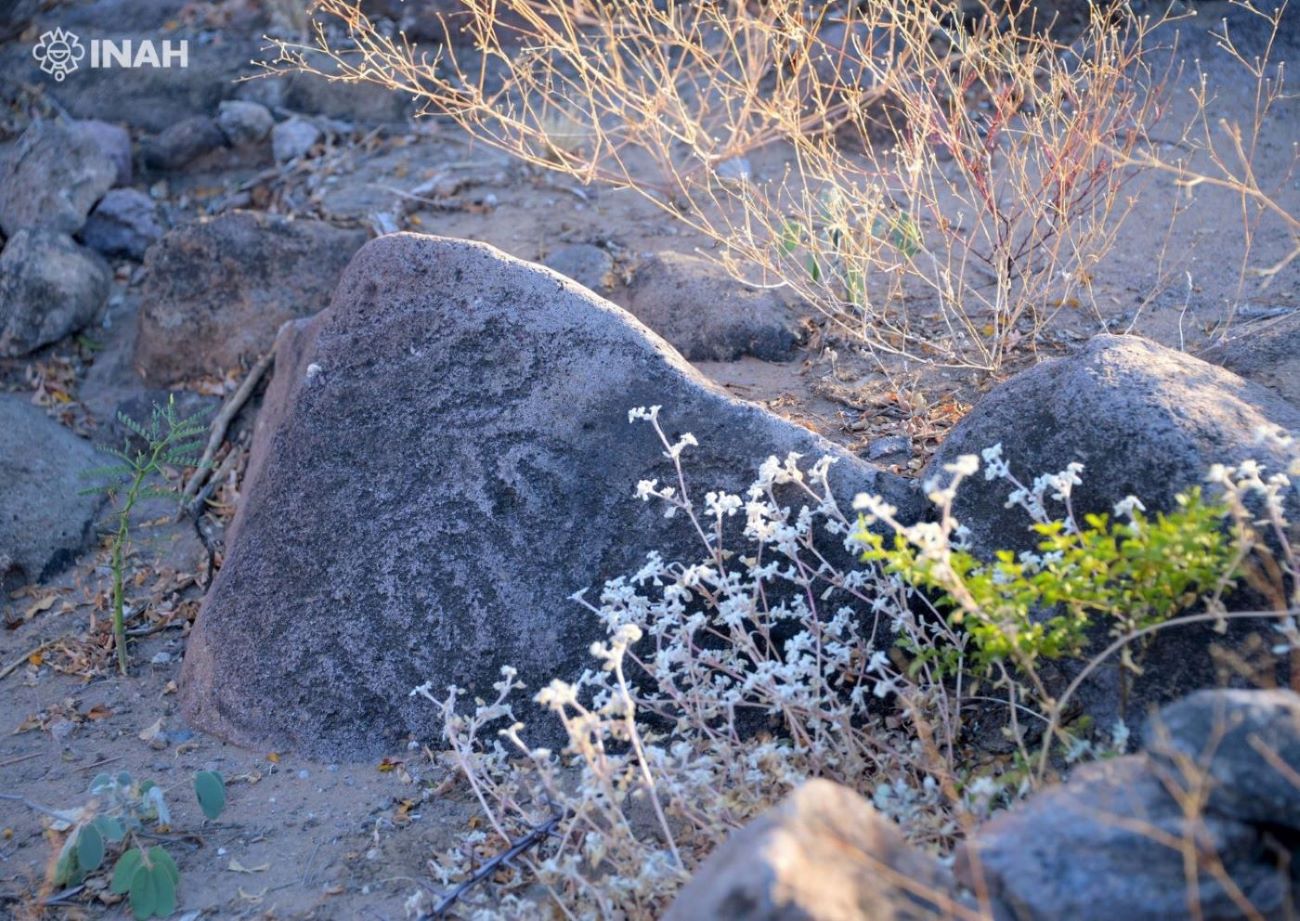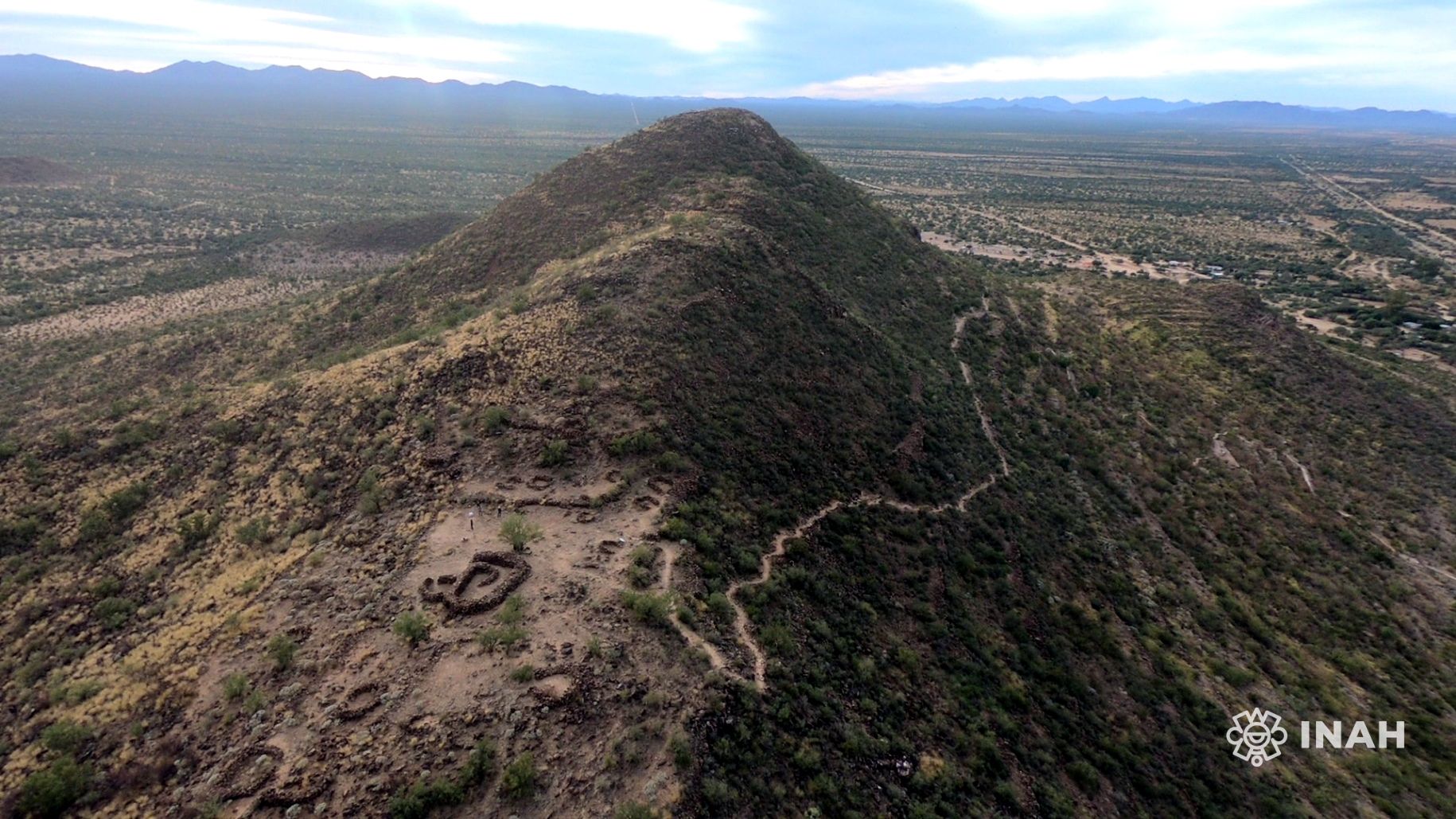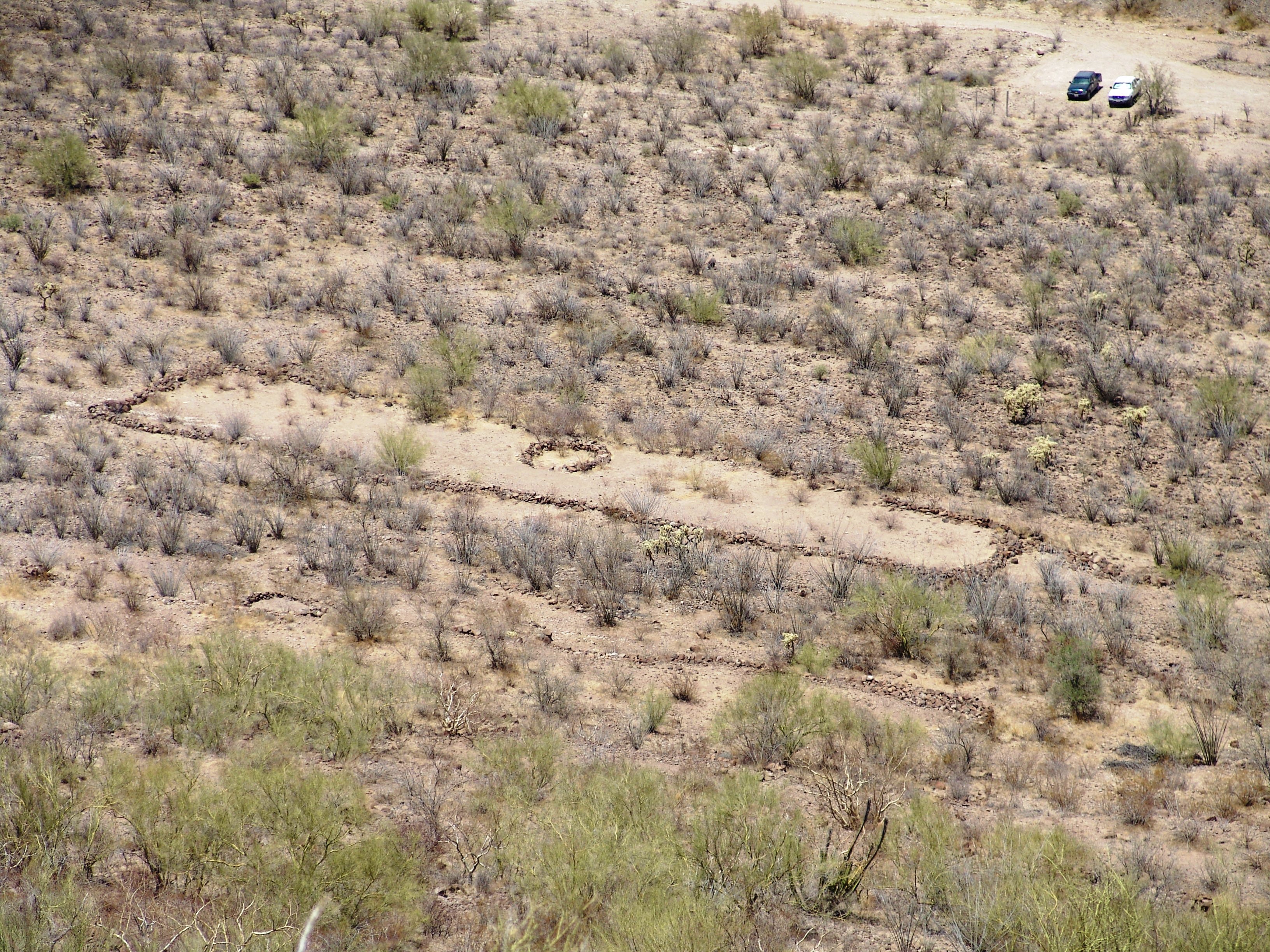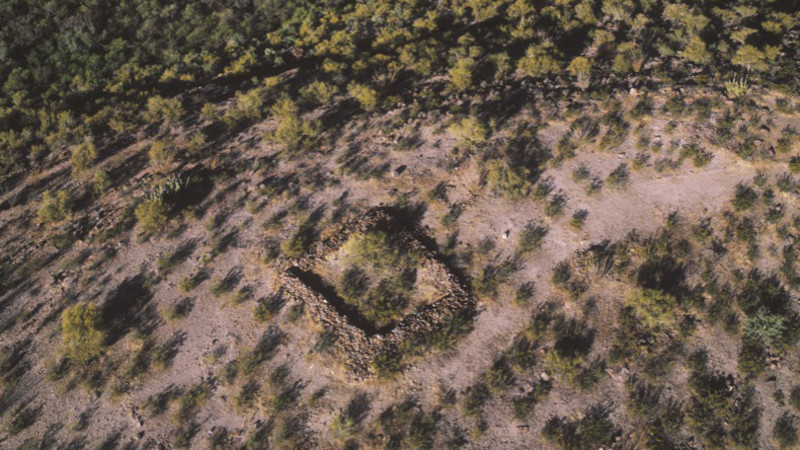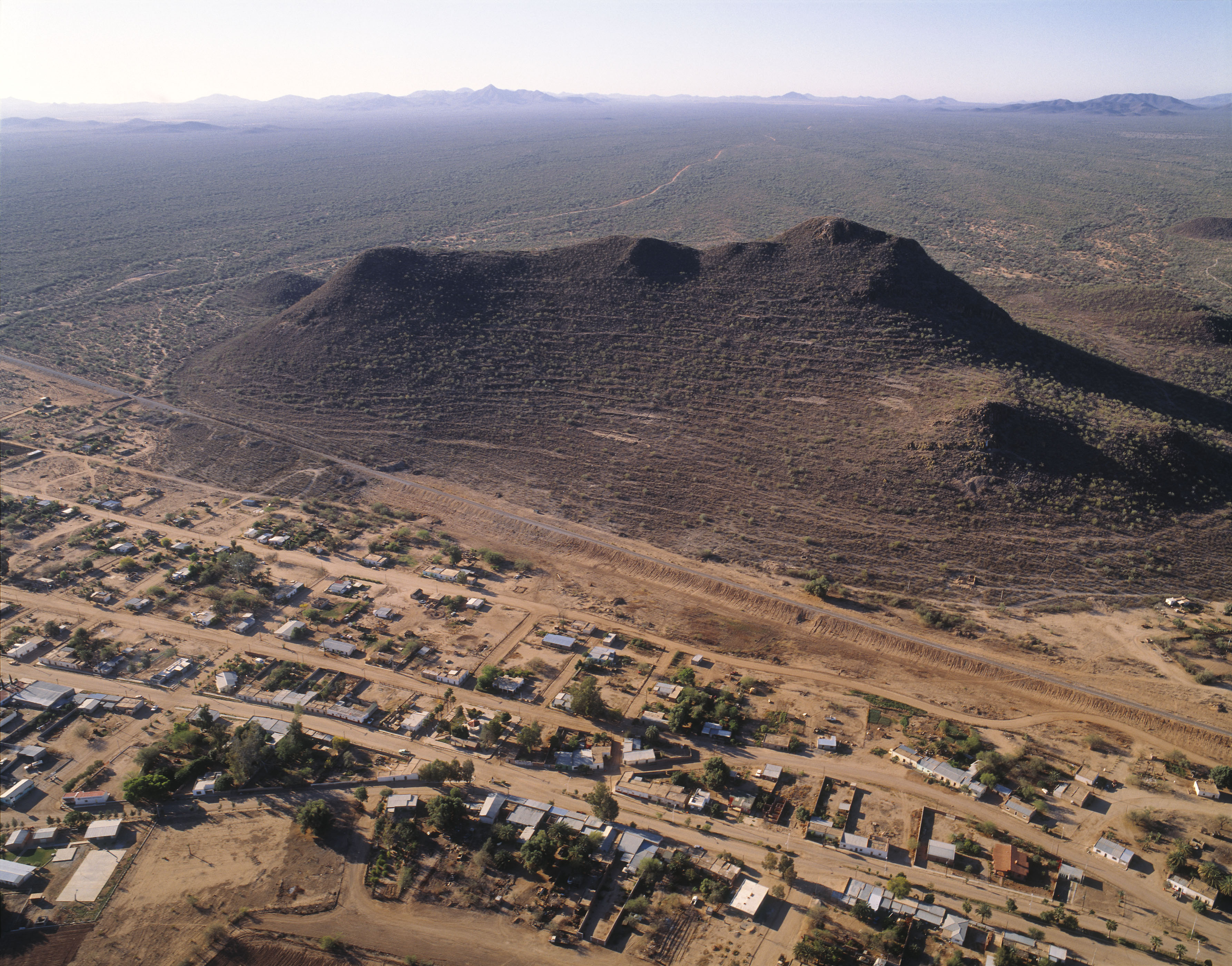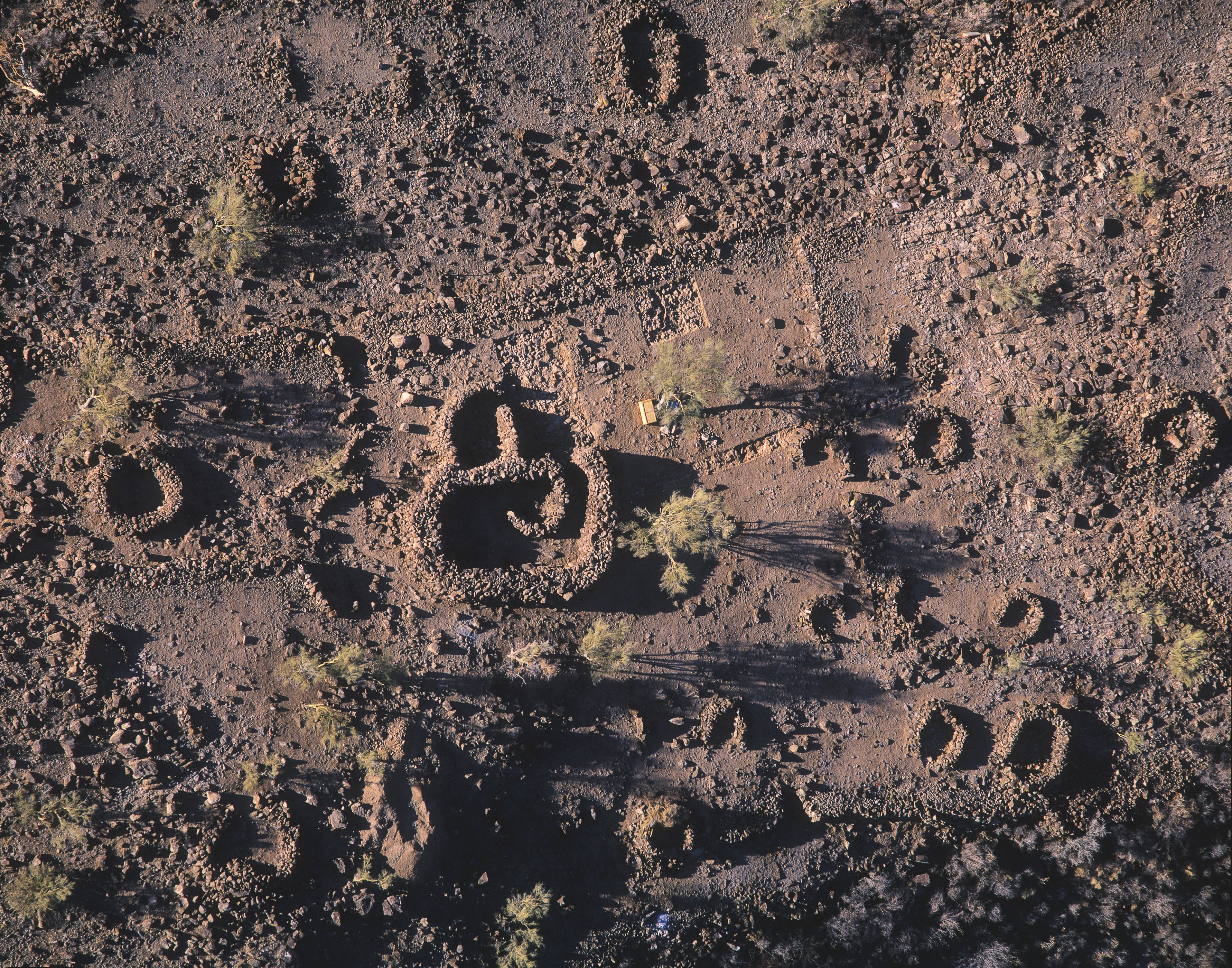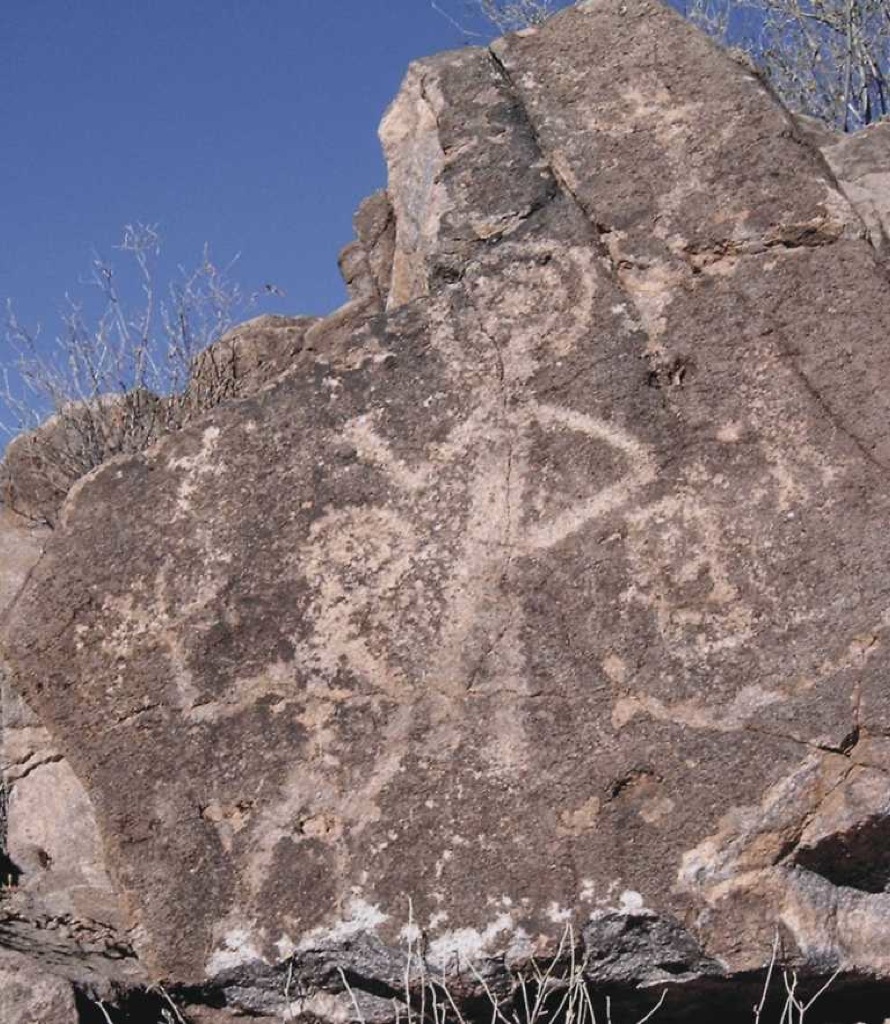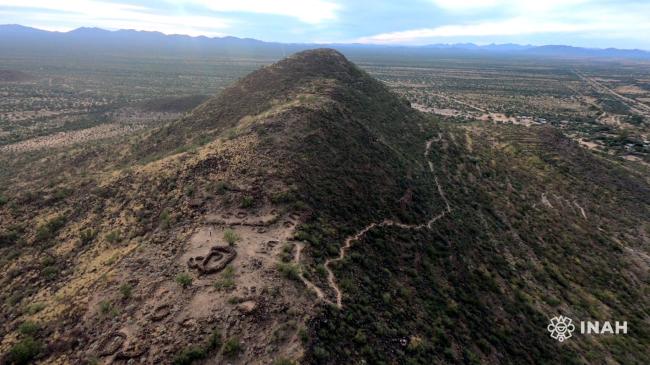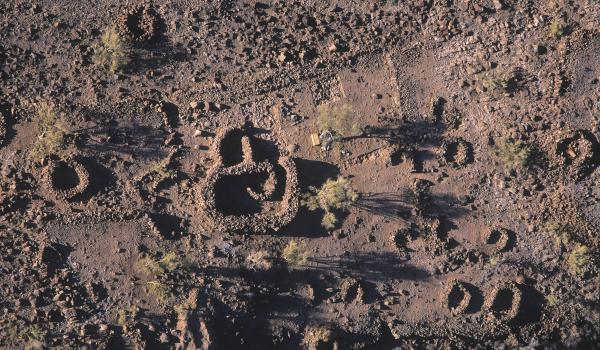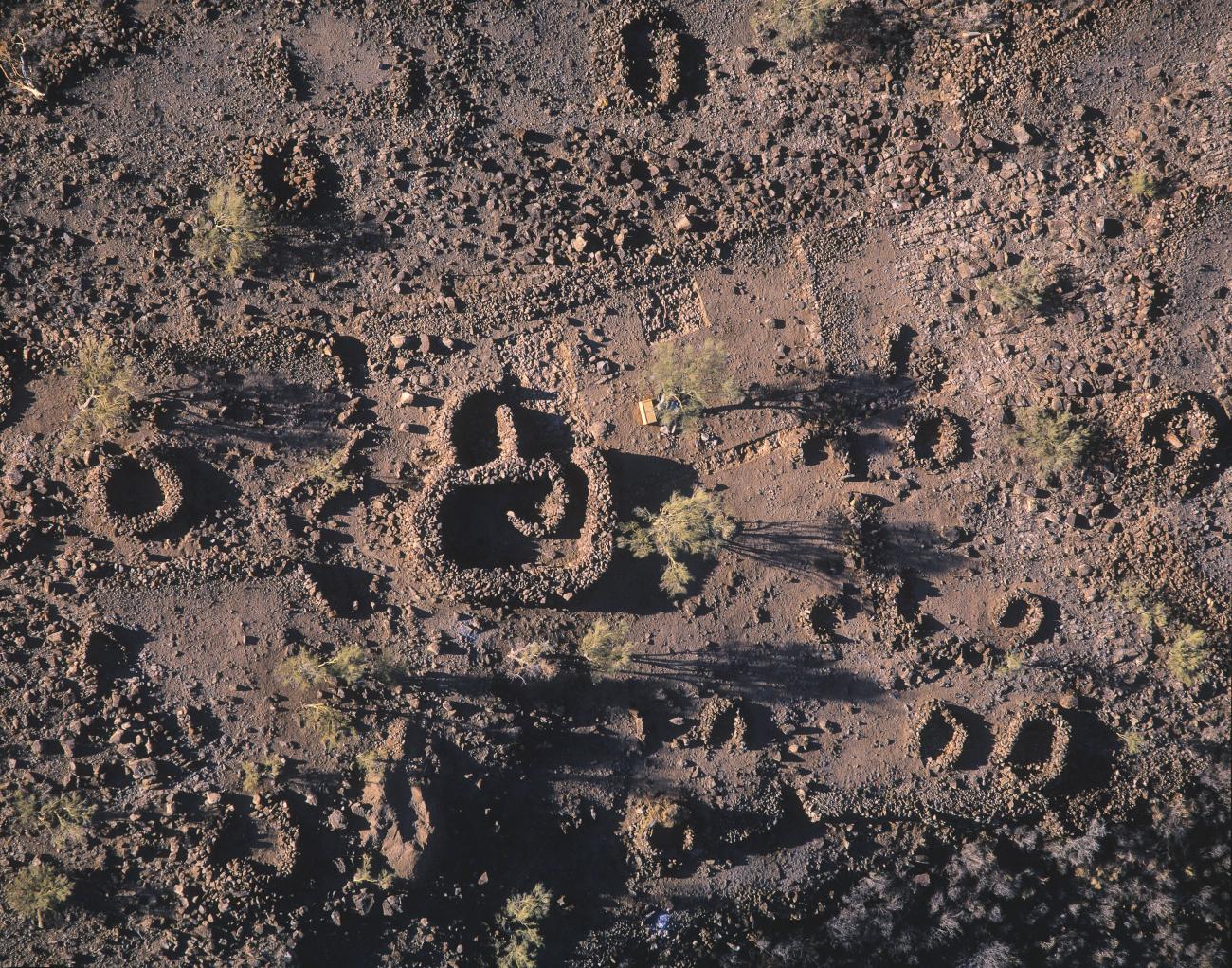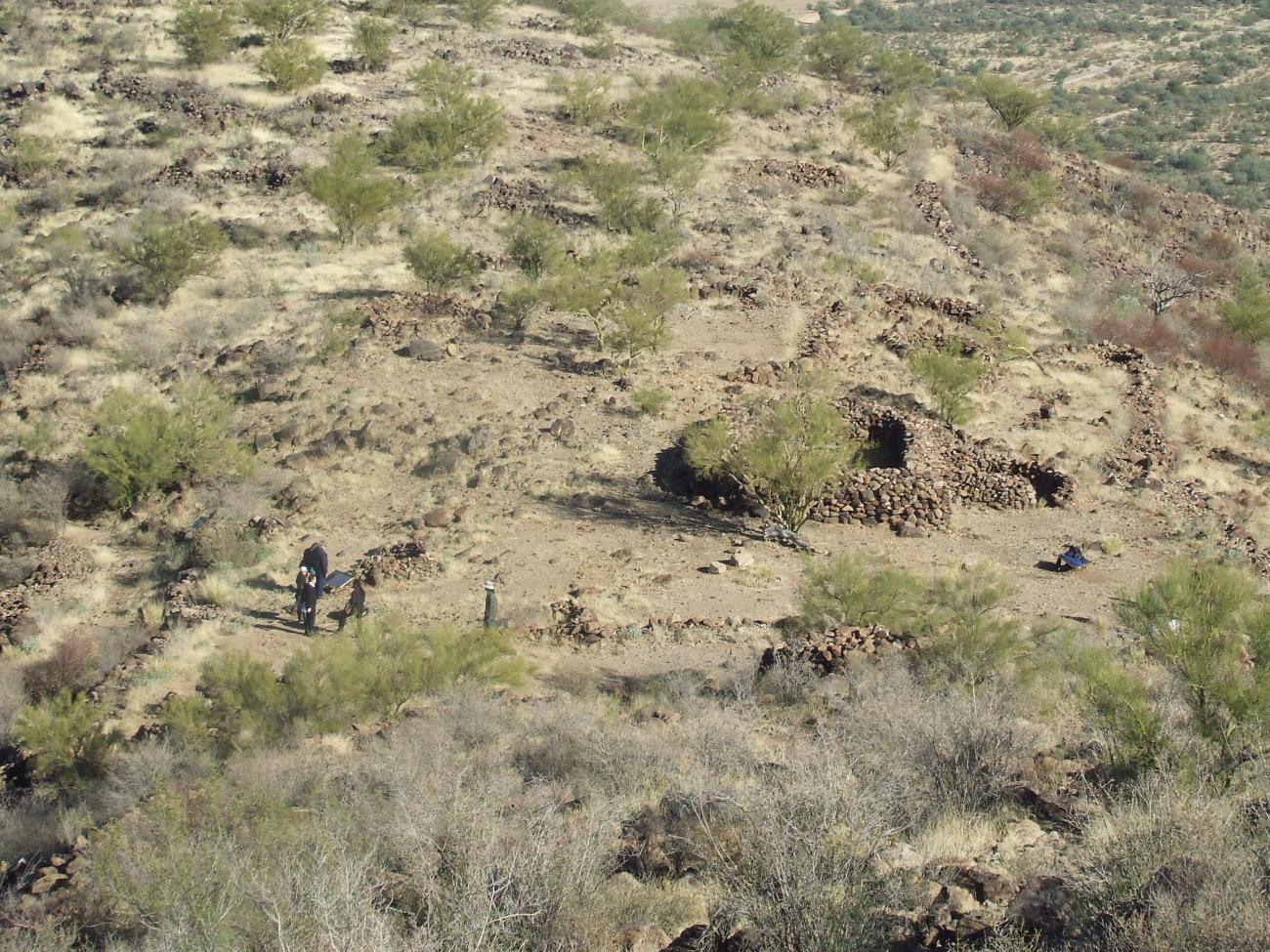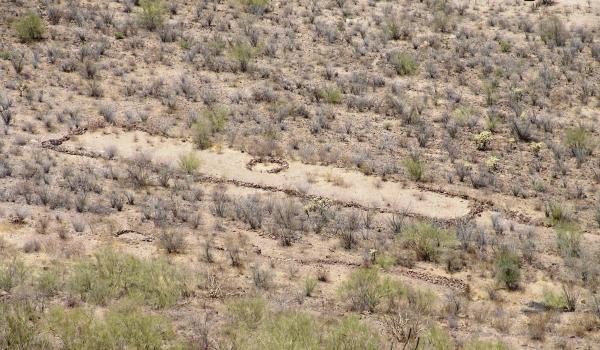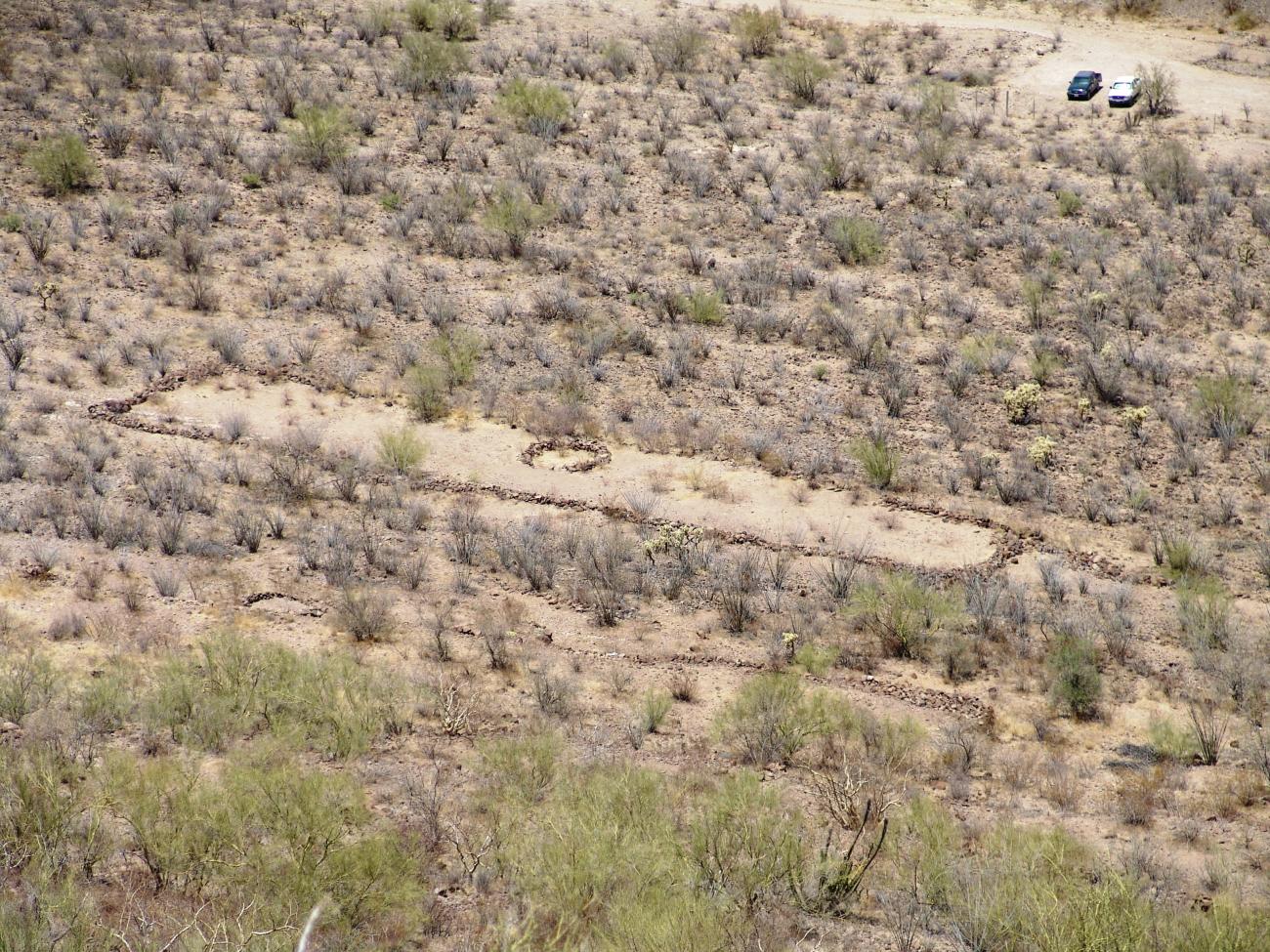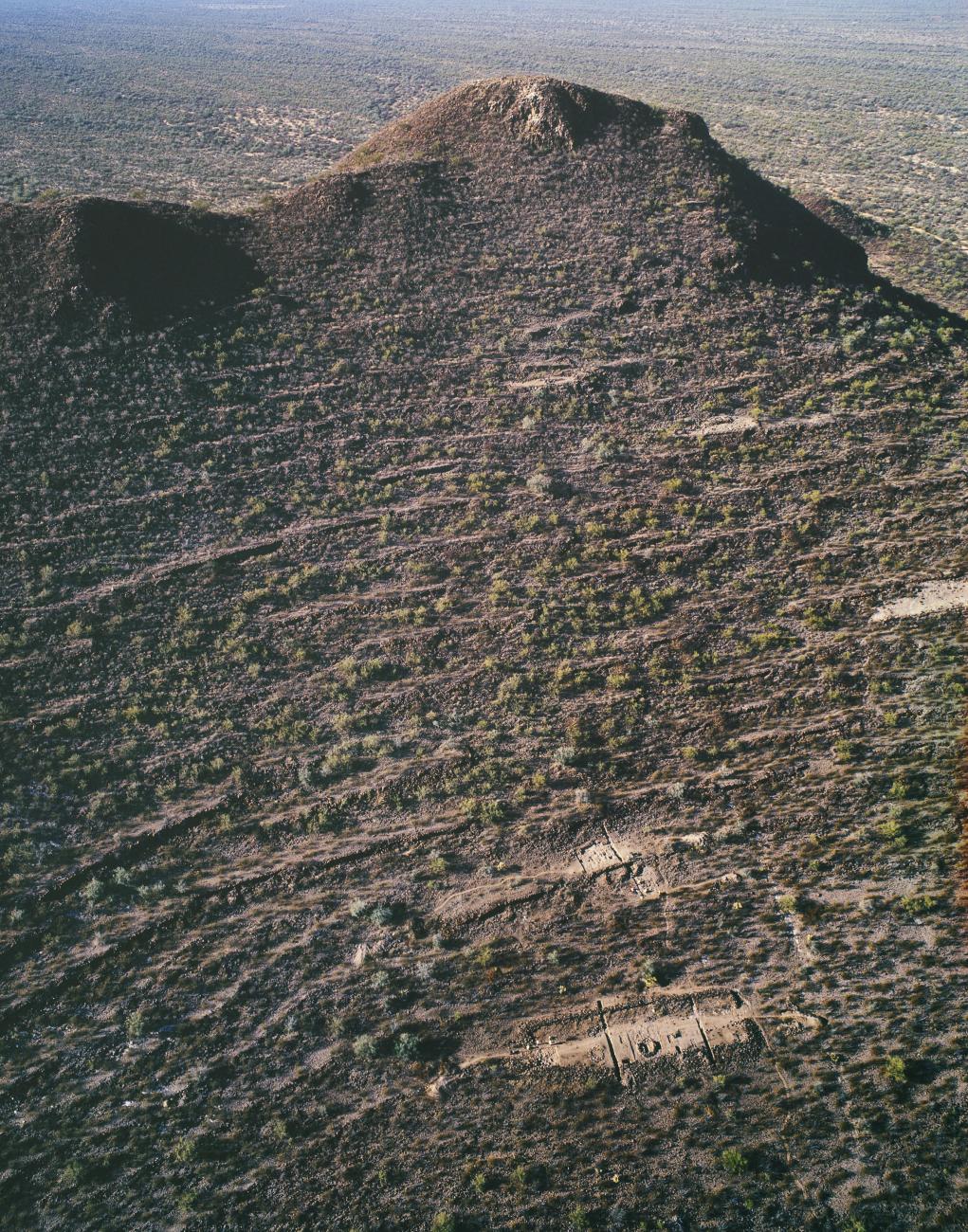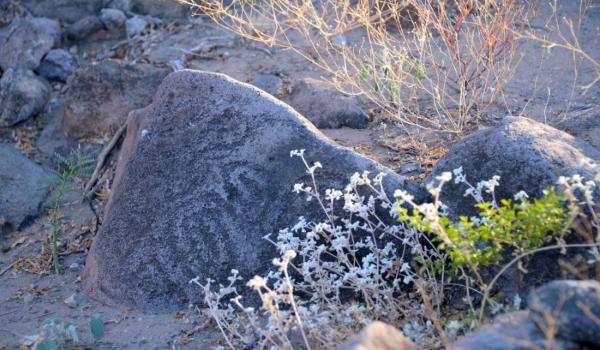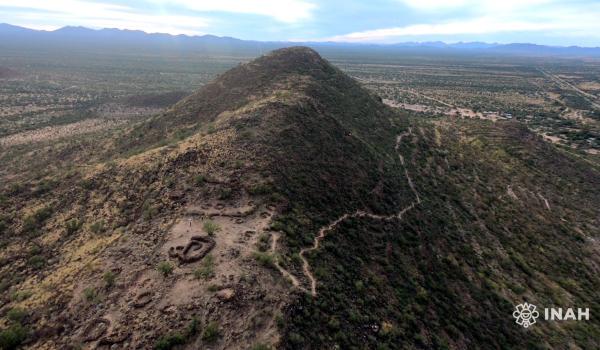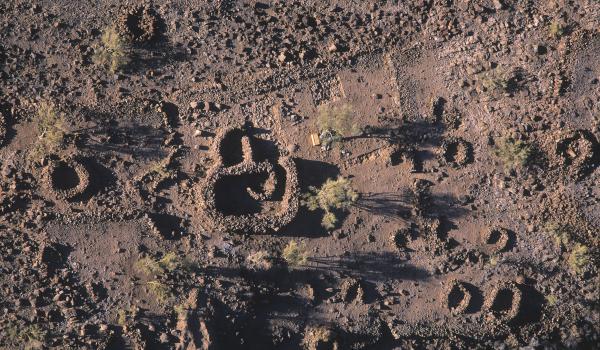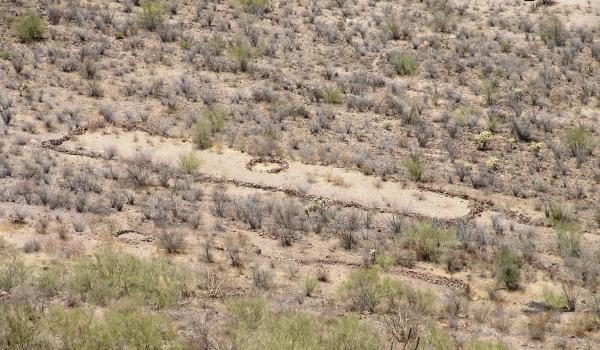The American continent’s first settlers arrived to the modern-day territory of Sonora 13,000 years ago. When the Sonora desert formed 10,000 years ago, these hunters and gatherers adapted to its conditions and enriched their diet with the desert plants. The region’s natural richness allowed this archaic way of life to endure for several millennia.
Approximately 3,500 years ago, the settlers learned how to cultivate maize and used canals for irrigation. The care required for farming led to the emergence of the first permanent settlements or villages. These had common cultural characteristics such as the production of purple-on-red pottery, the construction of walls or “pens” on the peak of some hills and building terraces or “trenches” on the hillsides. As a result, these villages are known as belonging to the “Trenchiras” tradition.
Seven hundred years ago, the site became the governing center of the farming villages scattered around the valleys of the Magdalena, Altar and Concepción rivers. It was home to a population of more than 1,000 inhabitants from 1300 to 1450. When controlling the valleys from this town became impossible, the communities went back to living in isolated villages.
In this pre-Hispanic settlement, stone-walled terraces were built. They were used to build houses and shelters by the ancient inhabitants, where they carried out all of their daily activities. They also had areas dedicated to certain activities. Some were used for public or communal ceremonies and others for private rituals, exclusively for certain groups or the head family.




